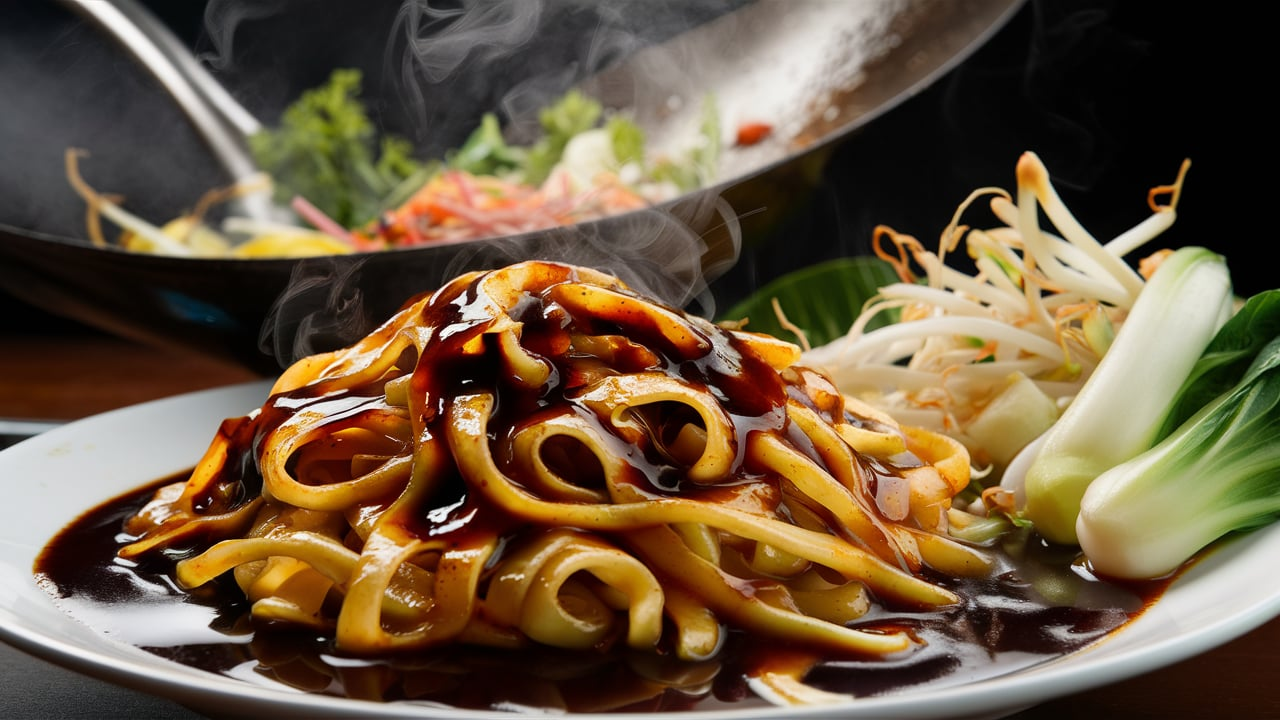Introduction
Cantucci, or Biscottiamo as they’re typically regarded, hail from the picturesque vicinity of Prato in Tuscany, embodying a necessary piece of Italian culinary artistry. These long-fashioned cookies distinguish themselves via a twice-baked system, ensuing of their signature dry and crunchy texture that makes them a really perfect accomplice to beverages like espresso or sweet wines along with vin santo or marsala. While conventional recipes satisfy themselves with no longer the use of any fat, modern-day versions have introduced elements like butter or oil to decorate the texture, showing a lovely combo of subculture and present-day tastes.
The artwork for creating cantucci includes simple techniques, requiring no specialized gear, which adds to their appeal and makes them a perfect closing-minute gift concept. Originating from the Latin words “bis”, meaning twice, and “coctus”, which means cooked, the term Biscottiamo directly references the precise baking approach that offers those cookies their awesome crunch and healthy flavor. As we discover the journey of cantucci from its roots in Tuscany to modern kitchens worldwide, this newsletter will delve into the conventional and progressive tactics for baking cantucci, highlighting the importance of elements like cinnamon and sugar, and examining the pleasant pairings of cantucci e vin santo that increase the level revel in.
The Historical Journey of Biscottiamo
Origins and Evolution
Biscottiamo roots hint back to historical Rome, where they had been in the beginning advanced as a durable meal for Roman legions. The name “Biscottiamo” comes from the Latin terms “bis”, which means two times, and “coctum,” which interprets to baking, indicating the approach of baking the dough twice to reap a hard, dry texture appropriate for lengthy trips.
The recipe changed into revitalized for the duration of the Renaissance in Tuscany, wherein it evolved into a popular delicacy paired with Vin Santo, a candy Tuscan wine. This length marked an enormous transformation as neighborhood flavors like almonds from Prato had been integrated, improving the traditional recipe.
The pivotal revival passed off in 1858 when Antonio Mattei, an Italian baker, refined the conventional almond Biscottiamo recipe. His efforts have been recognized with awards in major cities together with Florence, London, and Paris, cementing Biscotti’s reputation in European culinary arts.
Global Influence and Variations
As Biscottiamo gained recognition, they made their way into various cultures, each including a completely unique twist to the traditional recipe. For example, Mandelbrot, a variant of Yiddish cuisine called “almond bread,” showcases the adaptability of biscotti through one of kind culinary traditions.
TheBiscottiamo adventure persevered throughout the Atlantic to the United States, where it has become a favored accompaniment to espresso and tea, regularly served in cafés and coffee stores. This model highlights the cookie’s versatility and enchantment past its Italian origins.
In current settings, Biscottiamo recipes have embraced cutting-edge tastes via incorporating substances inclusive of butter and dessert wines, which had not been a part of the authentic 19th-century recipes. This mixture of culture with current culinary practices illustrates the continued evolution of biscotti.
Cultural and Culinary Significance
The ancient significance of Biscottiamo is deeply intertwined with Tuscan culinary traditions. The location’s wealthy history, stimulated by the way of the Villanovans and the Etruscans, set the stage for agricultural advancements that ultimately benefited culinary practices, inclusive of the baking of biscotti.
The conventional Biscottiamo, in particular the Cantucci from Prato, continue to be a symbol of the Tuscan historical past. It is not the simplest a reflection of the place’s culinary knowledge, but additionally a cherished aspect of social rituals, regularly enjoyed with a glass of Vin Santo at some stage in gatherings.
The enduring reputation of Biscottiamo, from its humble beginnings as a sensible solution for tourists to its status as a gourmand treat in modern-day delicacies, underscores its widespread function in both ancient and modern-day culinary contexts.
Understanding the Ingredients
Traditional and Innovative Ingredients
Base Ingredients: Traditional Cantucci Biscottiamo are normally made using the use of all-source flour, sugar, and eggs. The use of “00” flour, regarded for its pleasant texture, is a commonplace preference in true recipes. The addition of baking powder assists in leavening, giving the Biscottiamo its feature texture.
Flavor Enhancers: Key flavorings in Cantucci consist of grated orange zest and natural vanilla extract. These components are integral in reaching the awesome aromatic profile usual of traditional Cantucci. For variations, almond extract or lemon zest may be substituted to adjust the taste subtly.
Nuts and Additives: Almonds are the conventional preference, regularly unpeeled and whole. However, versions can also include hazelnuts, pistachios, or walnuts to introduce exclusive textures and flavors. Modern recipes can also contain dark chocolate chips, cranberries, or ginger for a present day twist eight.
Preparation and Storage Techniques

Mixing and Baking: The dough for Cantucci is blended into a barely sticky consistency, important for forming the rectangular Biscottiamo form. It is crucial now not to over-flour the dough as it is able to affect the feel of the very last product. The twice-baked method is crucial for achieving the dry, crisp texture that Cantucci is known for.
Storage: Post-baking, Cantucci must be stored in a tin field lined with baking paper or an airtight field to keep freshness. Properly stored, they could close for numerous weeks. For longer storage, freezing is a powerful alternative, allowing the Biscottiamo to be preserved for up to 3 months.
Substitutions and Variations
Flour Varieties: While all-motive flour is widespread, pastry or gluten-loose flours can be used as substitutes, preserving a 1:1 ratio for smooth adaptation 9. This flexibility permits individuals with nutritional regulations to enjoy Cantucci without compromising on flavor or texture.
Sweeteners and Liquids: Traditional recipes use granulated or caster sugar, but variations may additionally encompass honey for a distinct form of sweetness. The inclusion of Marsala or different fortified wines inside the dough adds depth to the taste profile, enhancing the overall flavor experience.
Egg Sizes and Types: While huge eggs are commonly advocated, medium eggs can also be used, demonstrating the recipe’s adaptability. The desire for eggs can influence the richness and binding of the Biscottiamo dough, affecting the final bake.
The substances and methods used in making Cantucci highlight a mix of subculture and innovation, taking into account a flexible baking level that caters to both traditional tastes and cutting-edge nutritional choices.
The Art of Making Biscottiamo

Step-by-StepBiscottiamo Baking Process
Initial Preparation and first bake: Begin via preheating the oven and making ready the biscotti dough with base substances like flour, sugar, and eggs. For more advantageous flavor, additions along with toasted almonds or vanilla extract can be covered. The dough is then shaped into logs and undergoes its first bake until its baking. This preliminary baking generally lasts approximately 30 minutes.
Slicing and Second Bake: After the first bake, even as the logs are nevertheless barely heat, they may be sliced into personal cookies using a serrated knife to ensure clean, even cuts. The slices are then laid out on a baking sheet and again to the oven for a 2nd bake. This critical step dries out the Biscottiamo, accomplishing its crunchy texture. The second baking normally lasts till the slices are dry and crisp, which can vary based totally on oven types and particular recipe instructions.
Cooling and Storage: Once baking is complete, the biscotti ought to be allowed to cool to keep its crispness. A proper garage involves setting the cooled biscotti in a hermetic container to keep them clean. If saved efficaciously, they are able to last for several weeks, making them best for long-term entertainment.
Key Baking Tips and Variations
- Temperature Consistency: Ensuring the oven is preheated to the proper temperature is important for each baking level to prevent undercooking or burning.
- Ingredient Quality: Using super components, especially for key taste enhancers like almonds and vanilla, significantly affects the general flavor and texture of the biscotti.
- Dough Handling: The dough must no longer be over-kneaded; it needs to be blended simply until it forms a cohesive mass. Over-kneading can result in hard biscotti.
- Variations: For the ones seeking to experiment, up to one cup of elements like chocolate chips, dried end result, or exclusive nuts can be added to the dough earlier than the primary bake. This customization lets bakers to tailor the flavor profiles to their liking.
Equipment and Techniques for Perfect Biscotti
Essential Baking Tools: A strong mixing bowl, a whisk or electric mixer for combining ingredients, a pointy serrated knife for reducing, and a reliable baking sheet are crucial for making biscotti.
Technique for Slicing: Slicing the Biscotti whilst they may be nevertheless heated and the use of a sawing motion with the serrated knife enables prevent the cookies from crumbling.
Adjusting Bake Times: The 2d bake time can be adjusted depending on how crunchy or dry the desired final product is. Watching closely at some point in this stage is prime to achieving the best consequences.
Modern Variations and Innovations
Expanding Flavor Profiles
Introduction of New Ingredients: Under the guidance of innovators like Bruno LoGreco, modern Biscotti have embraced a selection of the latest flavors and ingredients whilst keeping a reverence for conventional recipes. This mixing of antique and new enriches the biscotti enjoyment, making it appealing to a broader audience.
Diverse Flavors: Today’s Biscotti sorts consist of now are now not just the traditional almond but additionally chocolate, hazelnuts, pistachios, and an array of dried end results, catering to diverse palates and dietary desires. These additions have transformed the traditional biscotti right into a greater versatile deal with that may be loved in several contexts.
Health-Conscious Options: In reaction to developing fitness tendencies, some Biscotti at the moment are made with almond flour, reduced sugar, or gluten-unfastened options, providing alternatives for people with nutritional regulations.
Innovative Recipe Adjustments
Incorporation of Vin Santo: Modern recipes for biscotti once in a while encompass Vin Santo without delay inside the dough, including a distinct flavor that complements the conventional pairing of biscotti with this dessert wine four.
Softer Textures: While traditional Cantucci is thought for its crunch, current variations may also offer a softer chunk, broadening its enchantment and providing an extraordinary sensory revel in it.
Expanded Flavor Enhancements: The taste palette of biscotti now includes options like anisette, lemon, and amaretto, alongside numerous nuts, dried culmination, and chocolate, each including a unique twist to the conventional biscotti profile.
Culinary Flexibility and Creativity
Recipe Components: Modern biscotti recipes can encompass a rich mix of substances consisting of sugar, eggs, citrus zests, vanilla extract, orange blossom, rose water, and crushed almonds, demonstrating the culinary creativity now associated with biscotti.
Adaptability in Pairings: The traditional pairing of Cantucci with Vin Santo remains famous, but the accelerated taste profiles also allow for new pairing opportunities with different liquids and culinary settings, reflecting the adaptability of biscotti in current gastronomy.
Biscotti in the World of Pairings

Biscotti, with their crisp texture and various flavor profiles, have grown to be a canvas for culinary creativity, in particular in how they’re paired with beverages. The conventional Italian technique involves dipping biscotti, regarded locally as cantucci, into coffee or sweet wines like Vin Santo. This section explores the numerous pairing alternatives that beautify the biscotti tasting.
Traditional and Wine Pairings
Vin Santo and Almond Cantucci: A traditional Tuscan pairing where the sweet, complex flavors of Vin Santo, crafted from air-dried Trebbiano and Malvasia grapes, supplement the crunchy texture and nutty taste of almond cantucci.
Parmesan-Black Pepper Biscotti with White Wine: These savory biscotti pair excellently with the crispness of a Sauvignon Blanc, making for an advanced snack or appetizer.
Ice Wine and Fruit-Nut Biscotti: Dried cherries and pecan biscotti find a candy counterpart in Cabernet Franc ice wine, a pairing that highlights the rich, fruity undertones of both the wine and the biscotti.
Coffee and Non-Alcoholic Options
Coffee Pairings: Almond Biscotti are particularly delightful with Tanzania-style roast coffee, where the coffee’s cacao, brown spice, and stone fruit undertones marry well with the rich flavors of roasted almonds and amaretto in the biscotti.
Milk and Chocolate Biscotti: A universally enjoyed pairing involves Chocolate Almond Biscotti dipped into milk, a comforting and classic combination favored by all age groups.
Innovative and Contemporary Pairings
Late-Harvest Wine with Chocolate Orange Biscotti: The nutty and citrus notes of a late-harvest Riesling wine blend seamlessly with the flavors of Dark Chocolate & Orange Almond Biscotti, creating a sophisticated flavor profile.
Diverse Beverage Compatibility: Craisins and pistachio biscotti offer a versatile flavor that pairs well with both red and white wines, showcasing the biscotti’s adaptability to different palates and preferences.
These pairings not only respect the traditional methods but also introduce innovative combinations that can cater to contemporary tastes and dietary preferences.
Preserving Tradition While Embracing Evolution
Balancing Tradition with Innovation
Understanding the Fundamentals: To effectively balance tradition with innovation in biscotti baking, it’s essential to have a deep understanding of the historical techniques, ingredients, and flavors specific to this classic Italian treat.
Incorporating Modern Elements: Experimentation plays a crucial role in the evolution of biscotti. By experimenting with different combinations of ingredients, such as introducing spices, herbs, or modern garnishes, bakers can create unique variations while respecting the traditional essence of biscotti.
Learning from Others: Engaging with other chefs and embracing influences from various cuisines and cultures can inject new life into traditional recipes, leading to innovative yet respectful adaptations.
Mastering the Art of Innovation
Gokul Snacks Private Limited: This company exemplifies the successful integration of traditional recipes with modern technology. By blending age-old recipes with contemporary techniques and insights, they have managed to uphold the quality and taste that resonate with both traditional and modern consumers.
Embracing Tuscan Philosophies
Waste Not, Want Not: The Tuscan culinary philosophy of minimal waste plays a significant role in both traditional and modern cooking practices. This approach not only preserves the environment but also enhances the authenticity and sustainability of culinary practices, making it a vital component in the evolution of biscotti making.
Conclusion
Through the exploration of biscot tiamo, or the art of making perfect cantucci, it becomes clear that this traditional Italian biscuit embodies a rich cultural and culinary heritage that has transcended its local Tuscan roots to gain worldwide appreciation. The journey from ancient Roman legions to contemporary kitchens, where it has seen both adherence to tradition and acceptance of innovation, illustrates not just the resilience but also the adaptability of biscotti recipes. These recipes have evolved, incorporating new ingredients and flavors while preserving the essence that makes cantucci a beloved treat alongside coffee or sweet wines.
The significance of cantucci lies not only in its delightful taste and versatile pairings with beverages, but also in its representation of the balance between tradition and modernity. Bakers and chefs continue to experiment and innovate, introducing biscotti to newer audiences while ensuring those looking for the authentic taste of Tuscany can still find it in the traditional flavors. As biscotti continue to adapt and evolve, they remain a testament to the enduring appeal of Italian culinary artistry, inviting further exploration and appreciation of both its historical roots and its potential for future variations.





